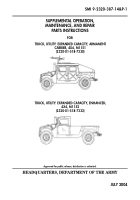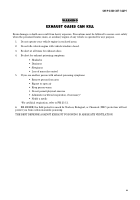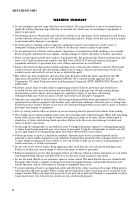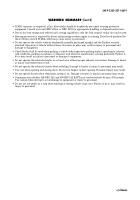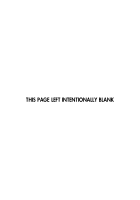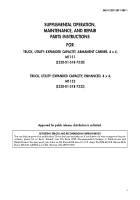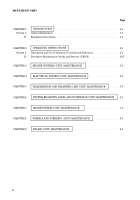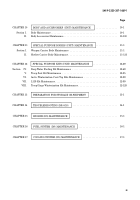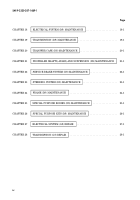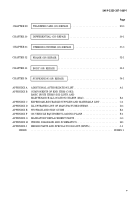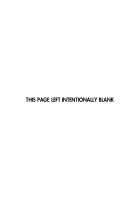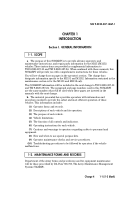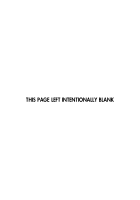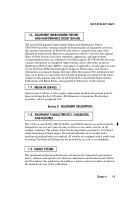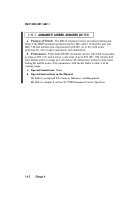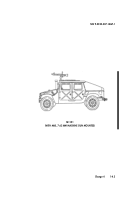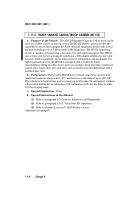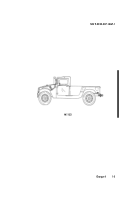SMI-9-2320-387-14P-1 - Page 4 of 671
WARNING SUMMARY
• Do not attempt to operate cargo shell door forward latch. The cargo shell door is not to be opened from
inside the vehicle. Opening cargo shell door from inside the vehicle may cause damage to equipment or
injury to personnel.
• Drycleaning solvent is flammable and will not be used near an open flame. A fire extinguisher will be kept
nearby when the solvent is used. Use only in well-ventilated places. Failure to do this may result in injury
to personnel and/or damage to equipment.
• Protective gloves, clothing, and/or respiratory equipment must be worn whenever caustic, toxic, or
flammable cleaning solutions are used. Failure to do this may result in injury to personnel.
• Do not perform fuel or battery system checks, inspections, or maintenance while smoking or near sparks.
Fuel may ignite and batteries may explode, causing damage to vehicle and injury or death to personnel.
• Never use transmission shift lever in place of parking brake. Set parking brake. Ensure transmission shift
lever is in P (park) position and transfer case shift lever is NOT in N (neutral) position. Damage to
equipment and injury to personnel may occur if these instructions are not followed.
• Ensure all slack from three-point seatbelt adjusting strap or three-point seatbelt is removed. Three-point
seatbelt retracts and will lock only during sudden stops or impact. Injury to personnel may result if an
accident occurs and seatbelts are not in use or adjusted properly.
• This vehicle has been designed to operate safely and efficiently within the limits specified in this TM.
Operations beyond these limits are prohibited IAW AR 750-1 without written approval from the
Commander, U.S. Army Tank-automotive and Armaments Command, ATTN: AMSTA-CM-S, Warren, MI
48397-5000.
• Extreme caution shall be taken when transporting personnel. Rollover protection and seatbelts are
available for the crew area only and are not provided in the troop/cargo area. Despite certain design
characteristics of the vehicle, such as improved capabilities, failure to use basic safe driving
techniques/skills may result in injury or death to personnel and damage to equipment.
• Operators are reminded to observe basic safe driving techniques/skills when operating the vehicle. Vehicle
speed must be reduced consistent with weather and road/terrain conditions. Obstacles such as stumps and
boulders must be avoided. Failure to use basic safe driving techniques/skills may result in injury or death to
personnel and damage to equipment.
• Prior to towing vehicle with rear wheels up, secure steering wheel to prevent front wheels from turning.
• Wear leather gloves when handling winch cable. Do not handle cable with bare hands. When fully extending
winch cable, ensure that four wraps of winch cable remain on drum at all times. Direct all personnel to
stand clear of winch cable during winch operation. Failure to do this may cause damage to vehicle and
injury or death to personnel.
• Avoid using fire extinguisher in unventilated areas. Prolonged inhalation exposure to extinguishing agent
or fumes from burning material may cause injury to personnel. Using fire extinguisher in windy area will
cause rapid dispersal of extinguishing agent and reduce effectiveness in fire control.
• Vehicle operation in snow is a hazardous condition. Operator must travel at reduced speeds and be
prepared to meet sudden changes in road conditions. Pump brakes gradually when stopping vehicle on ice
or snow. Sudden braking will cause wheels to lock and vehicle to slide out of control, causing damage to
vehicle and injury or death to personnel.
• Do not rely on wet service brakes. Keep applying brakes until they dry out and uneven braking ceases.
Failure to do this may cause damage to vehicle and injury or death to personnel.
• Exhaust components are hot after prolonged vehicle use. Ensure exhaust system components are cool before
removing/installing exhaust assembly. Failure to do this may result in injury to personnel.
• Do not use hand throttle as an automatic speed or cruise control. The hand throttle does not automatically
disengage when brake is applied, resulting in increased stopping distances and possible hazardous and
unsafe operation. Injury to personnel or damage to equipment may result.
• To ensure opening of hood is accomplished safely and effectively, always maintain the proper lifting posture,
with legs bent and back straight. When raising and securing hood, ensure hood prop rod is secured to hood
support bracket. When releasing hood prop rod, do not pull rod at hook end. Damage to equipment or injury
to personnel may occur if hood is not raised, secured, and lowered properly.
SMI 9-2320-387-14&P-1
b
Back to Top

